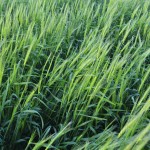
Tag Archives herbicides

Herbicide-resistant weeds changing farm practices
Resistant weeds are driving U.S. farmers to actions like manual weeding

Fighting myths about ag chemicals
The ag conversation includes many misunderstandings and dangerous myths

Chemical safety on the farm
You use them so often they may not even seem to be all that dangerous anymore. But make sure you know just what you’re dealing with

Weed management in soybeans
With high seed prices, farmers will be tempted to lower soybean seeding rates

Getting herbicides on your winter wheat
Everyone wants to get their winter wheat sprayed early in the spring. Find out how soon you can get started

Tillage: not always a dirty word
Moisture cycles change over time. It’s not a crime for soil management practices to change too

Plant growth regulators
They’re not new, but plant growth regulators are not yet common on the Canadian Prairies

Avadex back in the game to fight herbicide resistant weeds
When herbicide resistant wild oats crop up on you’re farm, you may be looking backwards in time to find a solution with a different, “new” active ingredient

Avoiding herbicide resistance
Worried weed scientists gather to discuss the future of weed control without new chemistry

New nitrogen stabilizer and herbicide system for crops
Dow AgroSciences is bringing products to market this fall that are more than just “new and improved”


